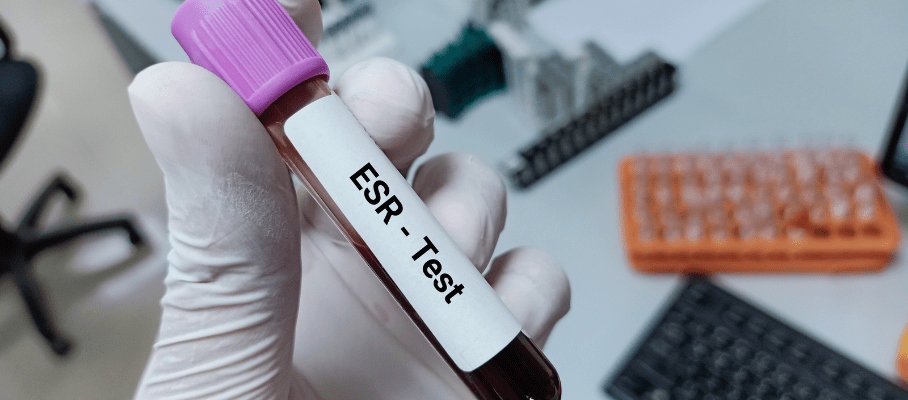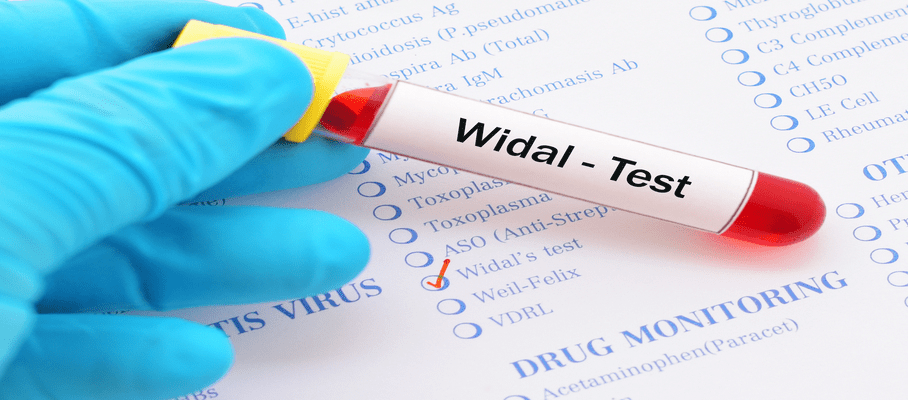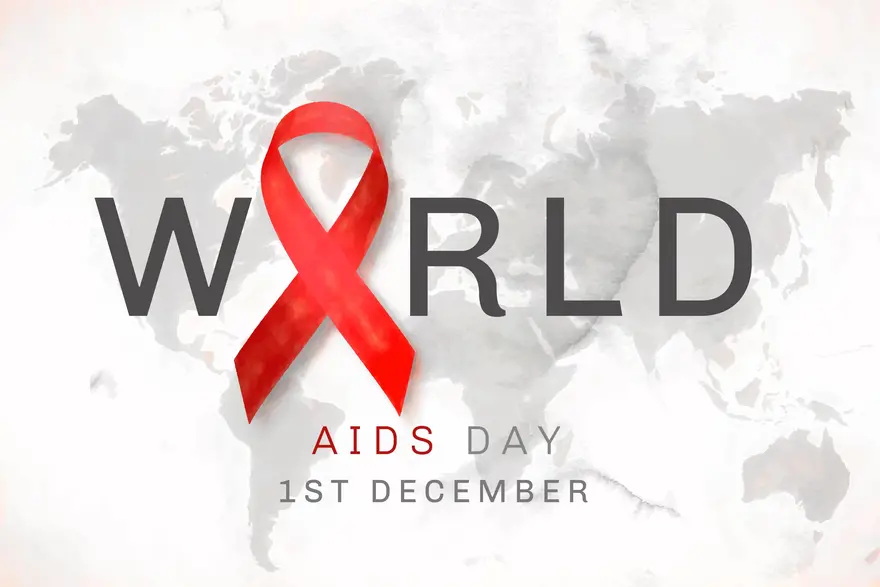Preventive Healthcare
Rickettsial Disease: Causes, Symptoms, Diagnosis & Treatment Explained

Table of Contents
- What is Rickettsia?
- What is Rickettsial disease?
- Types of Rickettsial Infections
- What are the Causes of rickettsial infection?
- How are Rickettsial Infections Spread?
- Symptoms to Watch for Rickettsial Disease
- Diagnostic Tests for Rickettsia
- Treatment Options for Rickettsial Infections
- What are the Complications for Rickettsial infections?
- Prevention of Rickettsial Infections
- When to See a Doctor?
- Conclusion
- FAQs
If you or someone you know is feeling unwell after a bite by a tick, mite, flea, or louse, it’s natural to feel concerned. Rickettsial disease is caused by bacteria spread through these tiny parasites and can lead to a range of symptoms, from mild to more severe.
The good news is that with early diagnosis and proper treatment, most people recover well. Understanding the signs, how it’s diagnosed, and available treatments can help you feel more in control and better prepared to manage your health.
What is Rickettsia?
Rickettsia is a group of tiny bacteria that live and grow inside the cells of other living organisms. These bacteria are usually carried by parasites like ticks, lice, mites, or fleas. They can cause illness in people when transmitted through a bite.
Rickettsia primarily affects small blood vessels, which can cause inflammation and related symptoms. Though small in size, these bacteria can result in serious infections if not recognised and treated early.
What is Rickettsial disease?
Rickettsial disease refers to infections caused by Rickettsia and similar bacteria. These diseases develop when the bacteria enter your bloodstream through a bite from an infected flea, mite, louse, or tick. Once inside, they can affect your blood vessels and lead to various symptoms, including fever and rash.
Though the symptoms can range in severity, with early diagnosis and care, most people recover well. Recognising the signs and understanding the cause helps you get proper help quickly.
Types of Rickettsial Infections
There are several types of Rickettsial disease, each linked to specific bacteria and carried by different insects. The symptoms may vary depending on the type, but many share common features.
- Spotted Fever Group (SFG):
- Rocky Mountain Spotted Fever: Caused by R. rickettsii. Common symptoms include fever, rash, and headache.
- African Tick Bite Fever: Caused by R. africae, often results in mild illness with swollen lymph nodes and an eschar (a dark scab at the bite).
- Mediterranean Spotted Fever: Caused by R. conorii, may cause rash, fever, and an eschar.
- Typhus Group:
- Murine Typhus: Caused by R. typhi, spread by fleas. Often shows up with fever and a body rash.
- Epidemic Typhus: Caused by R. prowazekii, transmitted by body lice, and can be severe if untreated.
- Scrub Typhus Group:
- Caused by Orientia tsutsugamushi, spread by mites, and commonly includes fever, cough, and swollen lymph nodes.
Each of these infections is part of the broader group known as Rickettsial infections, with unique characteristics and treatment needs.
What are the Causes of rickettsial infection?
Rickettsial infections occur when bacteria from the Rickettsia group enter your body, most commonly through an insect bite. While the bacteria are small, their impact on the body can be wide-ranging.
Common causes include:
- Tick bites: Ticks are main carriers of many types of Rickettsial infections, including spotted fever and scrub typhus.
- Mite exposure: Especially in scrubland or grassy areas, mite bites can lead to infections like scrub typhus.
- Flea bites: These can transmit Rickettsial disease such as murine typhus, especially in areas with rodents.
- Body lice: Associated with epidemic typhus, lice can carry bacteria and pass it through bites or contact with infected clothing or bedding.
- Exposure to wild animals or pets: Close contact with animals, especially in rural or outdoor settings, increases the risk.
Awareness of these causes helps you take better preventive steps when in risk-prone environments.
How are Rickettsial Infections Spread?
Rickettsial infections are not spread from person to person. Instead, they are passed through the bites of infected ticks, fleas, mites, or lice. When one of these insects bites you, it can introduce the bacteria into your bloodstream.
Sometimes, bacteria can also enter through broken skin or the eyes if insect feces come into contact with these areas. These infections are more likely during warmer months or in areas with dense vegetation and wildlife, where such insects are more active.
Knowing how these infections spread helps reduce the risk of contact and encourages quick action if bitten.
Symptoms to Watch for Rickettsial Disease
Rickettsial disease symptoms often appear a few days after being bitten by an infected insect. These can start mild but may become more serious if not treated.
Watch for the following signs:
- Fever: Often the first and most consistent symptom.
- Headache: Can range from mild to severe.
- Muscle and joint pain: Common in many Rickettsial infections.
- Rash: May appear as flat red spots or small raised bumps, often starting on the wrists and ankles.
- Eschar: A dark scab at the site of the bite is typical in some types.
- Fatigue and malaise: Feeling very tired or unwell.
- Swollen lymph nodes: Especially near the bite area.
- Cough or breathing difficulties: In more advanced cases.
If you notice these symptoms after a possible insect bite, seek medical advice promptly.
Diagnostic Tests for Rickettsia
Detecting Rickettsial infections early can make treatment more effective. Since the symptoms may resemble other illnesses, specific tests help confirm the diagnosis.
Here are common Rickettsial infection tests used:
- Serology tests: These detect antibodies in your blood that fight the infection.
- PCR (Polymerase Chain Reaction): Identifies the bacteria’s genetic material.
- Skin biopsy: A sample from the rash or eschar may help identify the organism.
- Complete blood count (CBC): Can show low white blood cells or platelets, which are common in these infections.
- Weil Felix test: Though outdated and less accurate, it's still used in some places to detect Rickettsial disease.
Your doctor may order one or more of these to ensure the correct diagnosis and guide treatment.
Treatment Options for Rickettsial Infections
Prompt Rickettsial disease treatment is key to avoiding complications. With early care, most people recover fully without long-term issues.
Common treatment options include:
- Doxycycline: This is the first-choice antibiotic. It works well across most types of Rickettsial disease.
- Chloramphenicol: Sometimes used if doxycycline is not suitable, such as during pregnancy (with caution).
- Azithromycin: May be helpful in cases where tetracycline resistance is suspected, especially in scrub typhus.
- Supportive care: Includes rest, fluids, and managing fever or pain with safe medications.
Important points to remember:
- Treatment should start as soon as Rickettsial disease is suspected—waiting for test results can delay recovery.
- Children can safely take doxycycline for short courses, despite previous concerns about tooth staining, as current guidelines support its use for Rickettsial infections..
- Severe cases may need hospital care, including IV antibiotics and monitoring.
- Do not use fluoroquinolones, as they have been linked with poor outcomes in Rickettsial infections.
With proper care, recovery is usually smooth, and symptoms begin to ease within a few days of treatment.
What are the Complications for Rickettsial infections?
If left untreated or diagnosed late, Rickettsial infections can cause serious complications. These are rare with timely care but important to understand.
Possible complications include:
- Organ failure: The bacteria can affect the heart, kidneys, or lungs.
- Sepsis: A life-threatening response to infection in the bloodstream.
- Hearing loss: May happen after recovery in some cases.
- Neurological issues: Confusion, memory problems, or coordination trouble.
- Skin damage or scarring: From severe rashes or eschars.
- Paralysis or incontinence: In very rare and severe cases.
Starting Rickettsial disease treatment early greatly reduces the chance of these outcomes.
Prevention of Rickettsial Infections
Prevention is your best line of defence. By avoiding bites and knowing where risk exists, you can stay protected from Rickettsial infections.
Tips to reduce your risk:
- Wear protective clothing: Long sleeves, trousers, and hats when in tall grass or wooded areas.
- Use insect repellent: Choose one with DEET or picaridin.
- Inspect your skin: Check for ticks or bites after outdoor activities.
- Avoid close contact with stray animals: Especially dogs or rodents, which may carry fleas or ticks.
- Keep your surroundings clean: Reduce places where rodents or insects may thrive.
- Wash and check pets: Especially if they roam in wooded or grassy areas.
There is no vaccine for Rickettsial disease, so prevention through lifestyle and environment awareness is essential.
When to See a Doctor?
Knowing when to seek help can make a real difference. If you’ve been bitten by a tick, flea, mite, or louse and start feeling unwell, it’s time to get checked.
See your doctor if you experience:
- Sudden fever after an insect bite
- Unexplained rash
- Dark scab (eschar) on the skin
- Severe headaches or confusion
- Breathing problems or chest pain
These may be signs of Rickettsial disease symptoms, and starting treatment early gives the best results.
Conclusion
Rickettsial disease can be managed effectively when recognised early. Knowing the symptoms, how it spreads, and when to seek help empowers you to act with confidence. Timely testing is crucial for diagnosis and treatment.
For trusted diagnostic support, Metropolis Healthcare offers advanced testing, accurate reporting, and convenient home sample collection. With decades of experience and a strong reputation, they are a reliable partner in helping you stay informed and in control of your health.
FAQs
What is the difference between Rickettsia and Borrelia?
Rickettsia are bacteria that live inside cells, while Borrelia are spiral-shaped bacteria that live outside cells and cause diseases like Lyme disease.
How do you get Rickettsia?
You can get Rickettsia through bites from infected ticks, fleas, lice, or mites during outdoor activities or contact with infested animals or environments.
How do Rickettsial infections spread?
Rickettsial infections spread through the bites of infected arthropods like ticks and mites; they are not transmitted from person to person.
Are Rickettsial infections dangerous?
Yes, if untreated, they can lead to serious complications. However, with early diagnosis and treatment, most people recover without long-term problems.



































